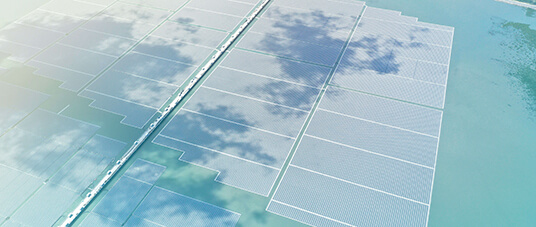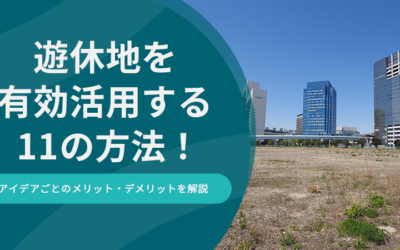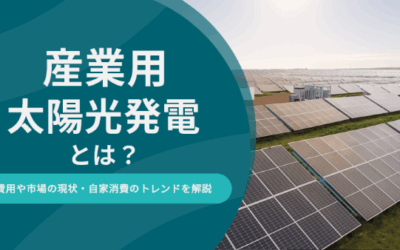At Ciel & Terre, we developed a strong anchoring design and calculation methodology to engineer our floating solar solutions and design optimized floating PV plants. We pay great attention to each market and site’s specificities. Indeed, our main motivation is to offer highly reliable products and FPV plants. We do so because from their liability depends the bankability of floating solar projects. To stick to this, we managed a study on one of our projects in Japan. Indeed, this region can be considered as a hostile environment with frequent typhoons. Nevertheless, Japan is the full of opportunities and the historical nation of floating solar.
ANCHORING CALCULATION METHODOLOGY QUALIFIED BY A CASE STUDY
In this section, we will present our study we have carried on Yukimine Ike, a Japanese project under operation since 2017. To achieve this, we have collected data from the FPV plant for years. Certainly, the objective is to correlate the wind load calculation methodology applied so far to the design of our floating solar plants, with a particular intention on the impact on anchoring system. At the origin of this initiative is the will and commitment to continuous improvement.

Yukimine monitoring system is quite complete. Firstly, it includes the necessary equipment to link the global loads applied on the plant to the wind. This involves an anemometers at different height levels to get wind speed data. Secondly, we also use weathervanes to get the direction from which the wind is blowing and load sensors to evaluate the mooring line tensions generated by the wind. Finally, we benefit from an ultrasonic sensor to gauge the water level state. In total, 77 sensors of different kind have been installed and harnessed.
Monitoring equipement highlights below:
ID card of the project
- Yukimine, Tokushima prefecture, Japan
- Irrigation pond – 32 anchors
- 6 MWp – 5808 panels of 60 cells
- Achieved in 2017


6m height anemometer
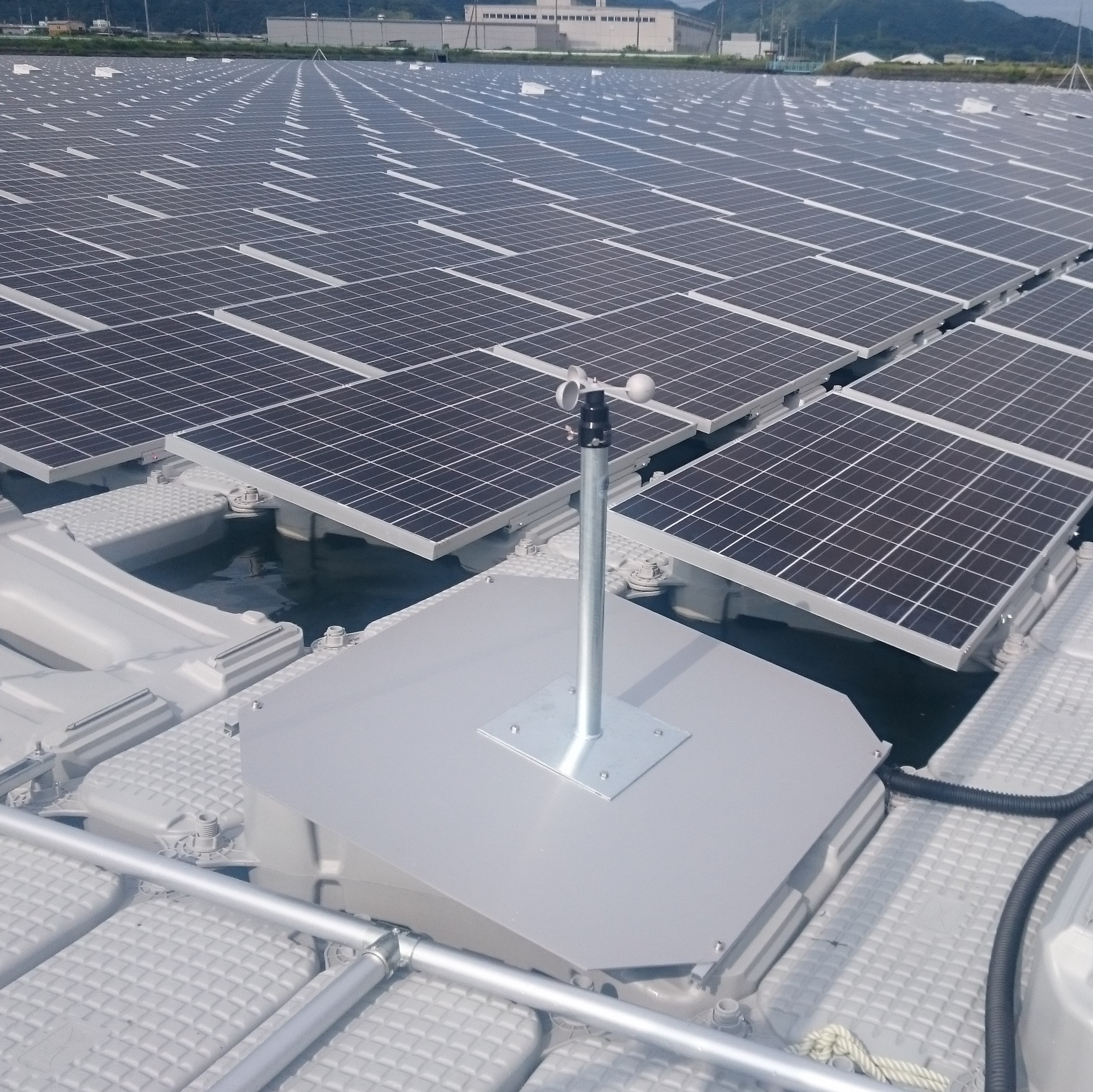
0.6m height anemometer
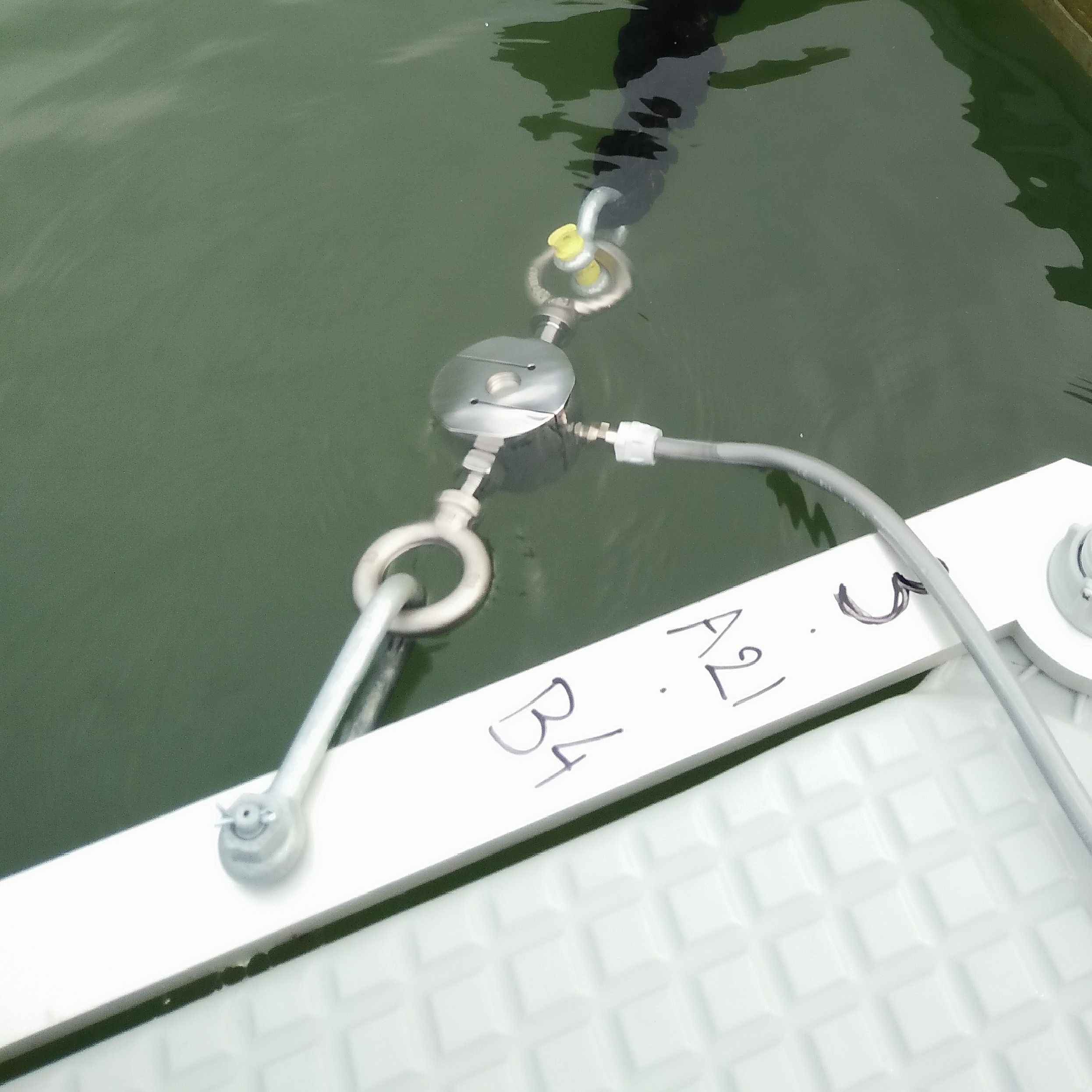
Load sensor
About the calculation methodology :
With the equipment installed and data collected, our calculation methodology allowed us to link the plant’s global effective load to the theorical aerodynamic expression (K x V²)[1] .
- The K factor is a function of the wind direction, same as CTI drag, drift and lift factors obtained through CFD[2].
- The K polar result graph[3] indicates how the wind loads spread on the floating PV plant as per its cardinal points.
All things considered, the outcome of the site monitoring analysis shows that the monitoring installation protocol is satisfying. Indeed, it matches with the theoretical approach. In addition, the monitoring shows it is reliable for aerodynamic factor analysis. It therefore corroborates Ciel & Terre anchoring design methodology.
HYDRELIO® PLANTS BY CIEL & TERRE CAN RESIST HARSH CONDITIONS THANKS TO ANCHORING COMPUTATION TECHNIQUE
Based on it’s calculation methodology, Ciel & Terre has collected data from Yukimine FPV plant to correlate the wind load applied to the design of our floating solar plants. Above all, our will and commitment to continuous improvement are the reasons why we originally started this initiative.
A challenge for anchoring : environmental events
As mentioned above, in the South East Pacific region, typhoons are current climatic events, and Japan is no exception. Since 1951, the country has undergone more than 425 of such events[4] for instance. Yet, Ciel & Terre succeeded from pioneering on floating solar in this harsh area. The Japanese nation was indeed the early adopter of this technological innovation when the company’s floating solar adventure started about 10 years ago. Today, we count more than 115 floating PV plants equivalent to more than 180 MWp installed with Ciel & Terre’s FPV solutions.
The case of Yukimine projects
It is important to highlight that Yukimine FPV project is located in an area which was hit by 2 typhoons (#20 and #21). These 2 typhoons, respectively Cinamon and Jebi (the latter broke wind record and led to temporary close of Kansai airport[5]), had no impact on the Hydrelio® floating PV plants, though they were installed on their paths.
FLOATING PV PLANTS’ MONITORING: WHY MONITOR AND HOW TO DO IT
Anchoring tests and Simulations
As part of our calculation methodology, at Ciel & Terre, we highly regard Tests and Simulations for which we have dedicated teams. They put their complementary expertise at the service of product innovation and the achievement of projects. They work on the composition, the feeding and the development of numerical simulation models (including Anchoring, Mechanics, and Hydrodynamics and Aerodynamics as CFD fields of expertise) and correlation.
Real-scale analysis & calculation
Numerical simulation does not walk alone as it is enabled by expert software and data inputs. Those inputs include meteorological, from the project track-records, raw material behavior and product characteristics. Physical correlation comes in pair. This is made possible thanks to data issued from our real-scale test bed measurements and monitoring of full-scale projects. The aim is to calibrate numerical models and design methodology with onsite reality. Consequently, it ensures the reliability and bankability of the floating PV projects and CTI design processes.
External certifications for our methodology
Last but not least, the company’s methodology has also been approved by Bureau Veritas Rules and Regulations NR 493 in spring 2020. As well as certified in line with DNV JIP Recommended Practice about floating solar projects’ design (DNVGL-RP-0584) in spring 2021[6].
[1] Original equation: 1/2 x p x S x C x V2
[2] Computational Fluid Dynamics: analysis of fluid flows using numerical solution methods. Using CFD, you are able to analyse complex problems involving fluid-fluid, fluid-solid or fluid-gas interaction. Source: https://www.femto.eu/stories/what-is-cfd/
[3] Linear regression has been applied to the 24 graphs F = f(V2) generated from this study to get equivalent wind direction K aerodynamic factor.
[4] Source: http://agora.ex.nii.ac.jp/digital-typhoon/disaster/landfall-full/index.html.en
[5] More info: https://qz.com/1378242/typhoon-jebi-photos-of-japans-most-powerful-storm-in-25-years/
[6] More information in this article: RECOMMENDED PRACTICE DNVGL-RP-0584: STANDARDIZE FLOATING SOLAR TO EASE ITS DEVELOPMENT, https://www.ciel-et-terre.net/recommended-practice-dnvgl-rp-0584-standardize-floating-solar-to-ease-its-development/

